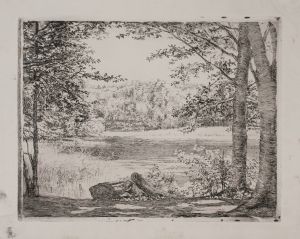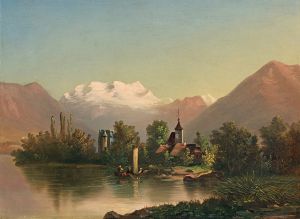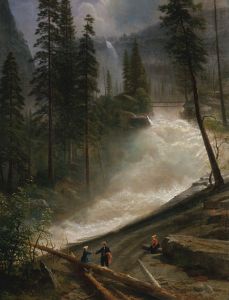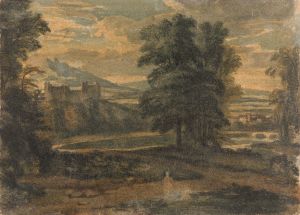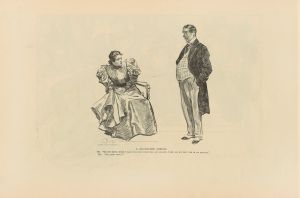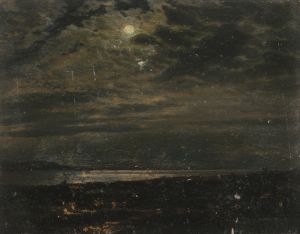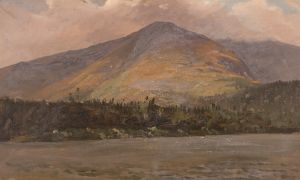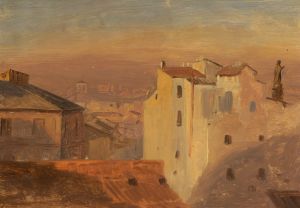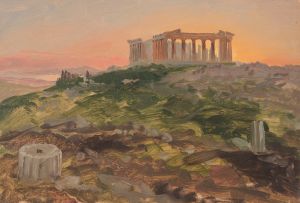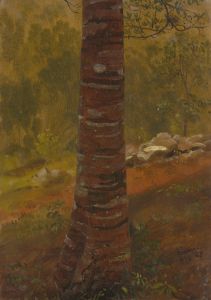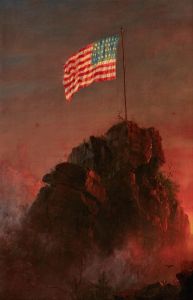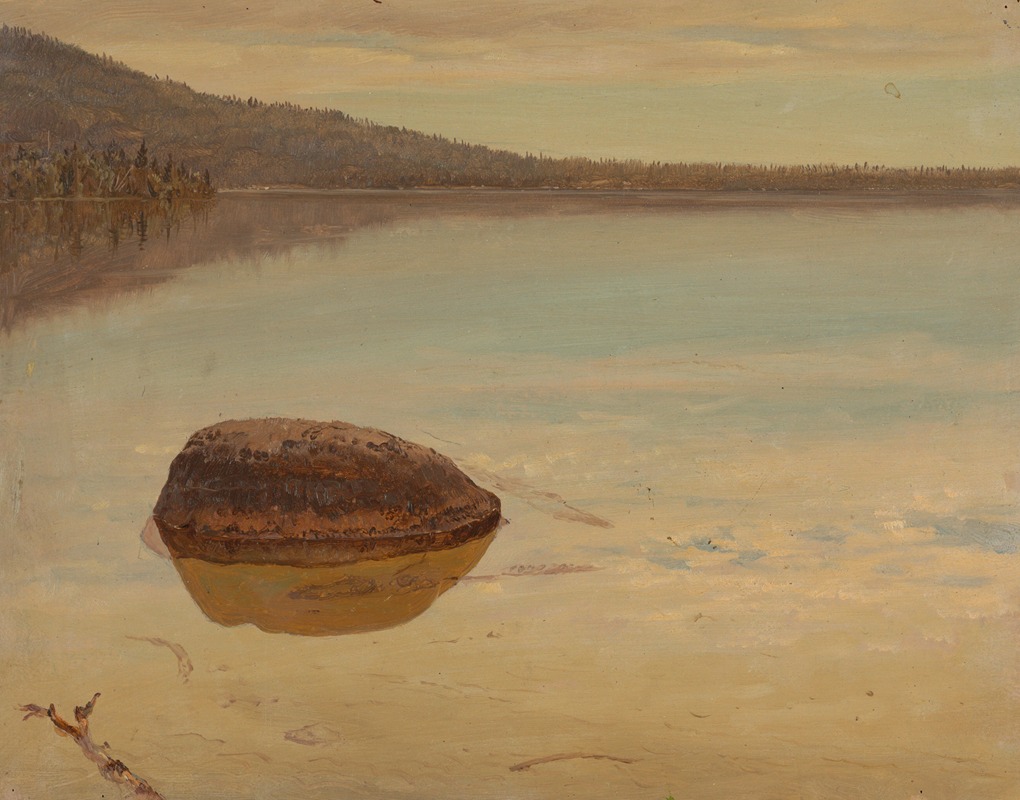
Lake Katahdin
A hand-painted replica of Frederic Edwin Church’s masterpiece Lake Katahdin, meticulously crafted by professional artists to capture the true essence of the original. Each piece is created with museum-quality canvas and rare mineral pigments, carefully painted by experienced artists with delicate brushstrokes and rich, layered colors to perfectly recreate the texture of the original artwork. Unlike machine-printed reproductions, this hand-painted version brings the painting to life, infused with the artist’s emotions and skill in every stroke. Whether for personal collection or home decoration, it instantly elevates the artistic atmosphere of any space.
Frederic Edwin Church's painting Lake Katahdin is a work by one of the most prominent figures of the Hudson River School, a mid-19th-century American art movement known for its detailed and romanticized depictions of the natural landscape. Church, celebrated for his dramatic and luminous landscapes, often drew inspiration from the grandeur of the American wilderness, and this painting is no exception.
The artwork depicts Lake Katahdin, located in Maine, with Mount Katahdin, the state's highest peak, serving as a dramatic backdrop. Mount Katahdin is a significant natural landmark and holds cultural and historical importance, particularly for the Penobscot Nation, the Indigenous people of the region. Church’s rendering of the scene captures the serene beauty of the lake and the imposing presence of the mountain, emphasizing the harmony and majesty of the natural world.
Church was known for his meticulous attention to detail and his ability to convey the sublime qualities of nature. His works often reflect the influence of the Romantic movement, which sought to evoke awe and reverence for the natural world. In Lake Katahdin, Church employs his signature use of light and atmospheric effects to create a sense of depth and tranquility. The painting showcases his skill in portraying the interplay between water, land, and sky, elements that are central to many of his landscapes.
While the exact date of the painting is not definitively recorded, it is consistent with Church’s broader body of work during the mid-19th century, a period when he frequently traveled to capture the diverse landscapes of North and South America. Church’s interest in Maine’s wilderness is well-documented, as he visited the region multiple times and created several works inspired by its rugged beauty.
Lake Katahdin is part of Church’s legacy as an artist who sought to celebrate the natural beauty of the United States. His works often resonated with the growing sense of national pride during the 19th century, as Americans began to view their landscapes as symbols of the country’s identity and potential. Church’s ability to combine scientific observation with artistic imagination made him one of the most influential landscape painters of his time.
The painting is now held in a private collection, and its public exhibitions have been limited. As with many of Church’s works, Lake Katahdin continues to be admired for its technical mastery and its ability to evoke the sublime power of nature.






